



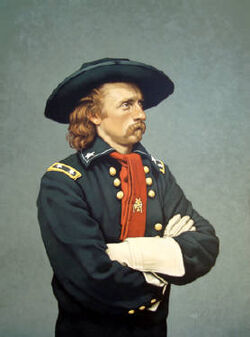
The American West Part 2: The Postbellum Period (1865-1900)
The period from 1865 to 1900 represented the Postbellum period of the frontier West. This was the time where most movies shown in America about the West describe. It was a period of massive change, of wars, of murder, of migrations, and of many societal changes. The Civil War was over and slavery is abolished forever in America. The federal government wanted to govern the territories. They used policies to prepare Western territories for statehood. This was done before by the Northwest Ordinance of 1787 (which was when the federal government acquired, prepared, and distributed public land to private ownership from the Ordinance system). The federal bureaucracy grew. Territorial governments grew beyond local powers. The federal government had an immense involvement in territories. They used direct subsidies to maintain military posts, provided safety from Native American attacks, bankrolled treaty obligations, built roads, etc. They also created surveys, staffed land offices, made labor improvements, and subsidized overland mail delivery. Many territorial citizens came to both oppose federal power and local corruption. Also, they paradoxically lament that more federal dollars were not sent their way. Territorial governors were political appointees. They were beholden to Washington. They allowed the legislatures to deal with local issues.
A territorial governor acted as a militia commander and a local superintendent of Native American affairs. They were the state liaison with federal agencies. Yet, the legislatures spoke for the local citizens. They were also having great leeway by the federal government to establish local law. These improvements to governance still left plenty of room for profiteering. As Mark Twain wrote while working for his brother, the secretary of Nevada, "The government of my country snubs honest simplicity, but fondles artistic villainy, and I think I might have developed into a very capable pickpocket if I had remained in the public service a year or two." "Territorial rings", corrupt associations of local politicians and business owners buttressed with federal patronage, embezzled from Native American tribes and local citizens, especially in the Dakota and New Mexico territories.
The federal government had a land system in the frontier West too. The government utilized exploration and scientific teams to take reconnaissance of the land. They wanted to find out about Native American habitation too. Via treaty, land title would be ceded by the resident tribes. The surveyors created detailed maps. They marked the land into squares of six miles on each side. It would be subdivided first into one square mile blocks, then into 160 acre lots. Townships would be formed from the lots and sold at public auction. Unsold land could be purchased from the land office at a minimum price of $1.25 per acre. The government, via public policy, would award public land to certain groups like veterans via the use of “land script.” The script traded in a financial market, often at below the $1.25 per acre minimum price set by law, which gave speculators, investors, and developers another way to acquire large tracts of land cheaply. Land policy became politicized by competing factions and interests, and the question of slavery (before 1865) on new lands was contentious. As a counter to land speculators, farmers formed "claims clubs" to enable them to buy larger tracts than the 160-acre (0.65 km2) allotments by trading among themselves at controlled prices.
In 1862, Congress passed three historically significant bills that transformed the land system of the West. One was the Homestead Act. This law granted 160 acres free of land to each settler who improved the land for 5 years. It was given to citizens and non-citizens including squatters and women. They were all eligible. The only cost was a modest filing fee. The law was especially important in the settling of the Plains states. Many took free homesteads and others purchased their land from railroads at low rates. The Pacific Railway Acts of 1862 provided for the land needed to build the transcontinental railroad. The land was given to the railroads alternated with the government owned tracts saved for free distribution to homesteaders. The federal government reduced each tract to 80 acres because of its perceived higher value given its proximity to the rail line.
The deal is that railroads had up to five years to sell to mortgage their land. The tracks had to be laid. Unsold land could be purchased by anyone. Some railroads sold some of their government acquired land to homesteaders immediately to encourage settlement and the growth of markets that the railroads would then be able to serve. Nebraska railroads in the 1870’s were strong boosters of lands along their routes. The railroad companies sent agents to Germany and Scandinavia with package deals. These deals included cheap transportation for the family like furniture and farm tools. They offered long term credit at law rates. Boosterism succeeded in attracting adventurous American and European families to Nebraska, helping them purchase land grant parcels on good terms. The selling price depended on such factors like soil quality, water, and instance from the railroad. The Morrill Act of 1862 gave land grants to states to start colleges of agriculture and mechanical arts (or engineering). Black colleges became eligible for these land grants in 1890. The Act succeeded in its goals to open new universities and make farming more scientific and profitable.
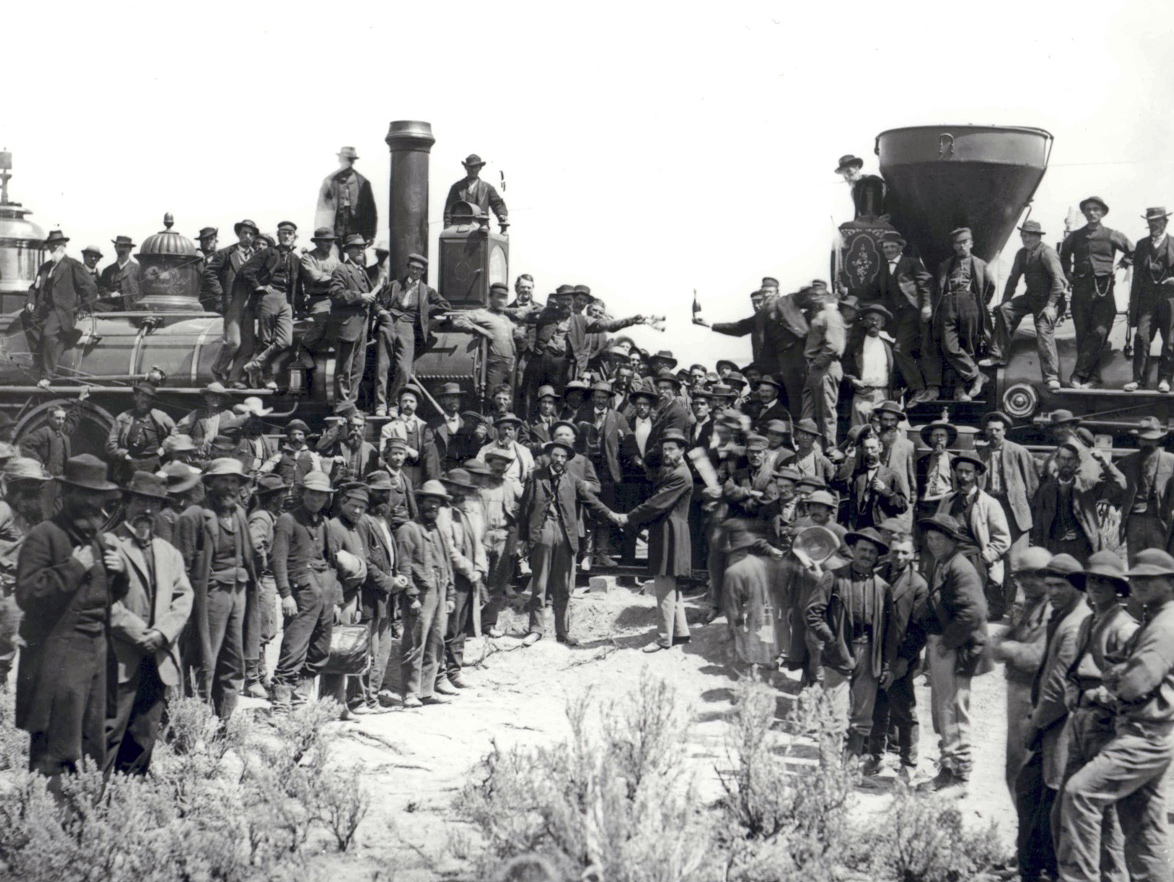
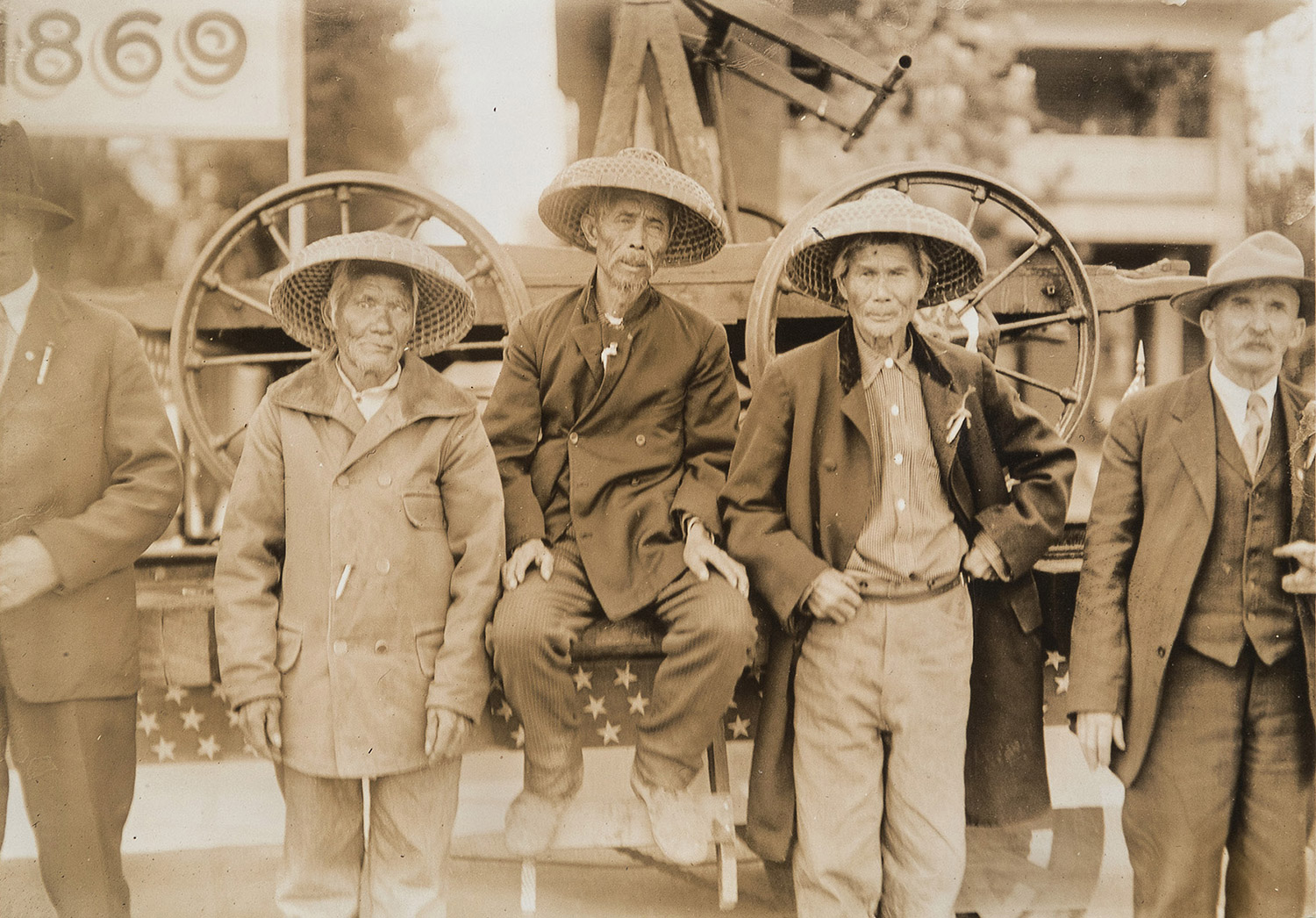
The Transcontinental Railroads
The transcontinental railroad has a long history. By the 1850’s, the government had surveys to explore many regions of the West. They wanted to possibly build a transcontinental railroad in various routes. This work was heavily executed by the Corps of Engineers, the Corps of Topographical Engineers, and the Bureau of Explorations and Surveys. This has been known as “The Great Reconnaissance.” There have been regional debates in Congress on whether the route would exist in the North, the central, or the southern part of America. Engineering requirements for the rail route were an adequate supply of water and wood and as nearly-level route as possible, given the weak locomotives of the era. Proposals for a transcontinental railroad system failed during the 1850’s, because of Congressional disputes over slavery. Confederate states started to secede in 1861. The modernizers in the Republican Party therefore took over Congress and wanted a line to link to California. Private companies were to build and operate the line. Construction was done by many workers who lived in temporary camps along the way. Immigrants from China and Ireland did most of the construction work. That is why in high school, we all heard of stories of Chinese people (who suffered racism and discrimination) contributing a great deal in the construction of the Transcontinental Railroad. Theodore Judah was the chief engineer of the Central Pacific. He surveyed the route from San Francisco east.
Judah used lobbying efforts in Washington were largely responsible for the passage of the Pacific Railroad Act. This law authorized construction of both the Central Pacific and the Union Pacific (which built west from Omaha). In 1862, four rich San Francisco merchants (whose names are Leland Stanford, Collis Huntington, Charles Crocker, and Mark Hopkins) took charge, with Crocker in charge of construction. The line was completed in May 1869. Coast-to-coast passenger travel in 8 days now replaced wagon trains or sea voyages that took 6 to 10 months and cost much more. The road was built from mortgages from New York City, Boston, and London. It was backed by land grants. There were no federal cash subsidies for the project. There was a loan to the Central Pacific that was eventually repaid at six percent interest. The federal government offered land grants in a checkerboard pattern. The railroad sold every other square with the government opening its half to homesteaders. The government also loaned money later repaid at $16,000 per mile on level stretches (and $32,000 to $48,000 in mountainous terrain. Local and state governments also aided the financing).
Most of the manual laborers on the Central Pacific were new arrivals from China. Kraus showed information how these men lived and worked (plus how they managed their money). He mentioned that the Chinese people were very reliable. The Central Pacific employed over 12,000 Chinese workers. 90% of them did its manual work force. It is a fact that many Chinese railroad workers were discriminated against. The railroad set different wage rates for white people and Chinese people. Chinese people were placed in more menial and dangerous jobs like handling and pouring nitroglycerin. The railroad had camps and food for the Chinese. Many railroads protected Chinese workers from threats from many white people. Many actions were done to build the railroads. These activities included surveying the route, blasting a right of way, building tunnels, and bridges, etc. They also had to clear and lay the roadbed, lay the ties and rails, and maintaining plus supplying the crews with food and tools. Very physical defines the work. People used horse drawn plows and scrapers. There were manuals picks, axes, sledgehammers, and handcarts that people used. Steam driven machines like shovels were used. The rails were iron (steel came a few years later) and weighed 700 lb. (320 kg). and required five men to lift. For blasting, they used black powder. The Union Pacific construction crews, mostly Irish Americans, averaged about two miles (3 km) of new track per day. All of these actions happened during the Gilded Age. Railroads were in Canada too. These railroads caused more farmers to open markets in the West including to ranchers.


From the north to south, there were the Northern Pacific, Milwaukee Road, and Great Northern. They were along the Canada-U.S. border. The Union Pacific/Central Pacific was in the middle. In the south were the Santa Fe and the Southern Pacific. All but the Great Northern of James J. Hill relied on land grants. The financial stories were often complex. For example, the Northern Pacific received its major land grant in 1864. Financier Jay Cooke (1821–1905) was in charge until 1873, when he went bankrupt. Federal courts, however, kept bankrupt railroads in operation. In 1881, Henry Villard (1835–1900) took over and finally completed the line to Seattle. But the line went bankrupt in the Panic of 1893 and Hill took it over. He then merged several lines with financing from J.P. Morgan, but President Theodore Roosevelt broke them up in 1904. From its first year of operation (1869-1870), 150,000 passengers made the long trip. Settlers were encouraged to travel via promotions to come West. There were free scouting trips to buy railroad land on easy terms spread over many years. The railroads had “Immigration Bureaus.” They advertised package low cost deals like passage and land on easy terms for farmers in Germany and Scandinavia. The prairies, they were promised, did not mean backbreaking toil because "settling on the prairie which is ready for the plow is different from plunging into a region covered with timber.”
The settlers were customers of the railroads, shipping their crops and cattle out, and bringing in manufactured products. All manufacturers benefited from the lower costs of transportation and the much larger radius of business. The Transcontinental railroad has a mixed legacy. It opened the West to settlement. It brought thousands of high tech, high paid workers and managers. It created thousands of towns and cities. It made the nation to focus more on an east-west axis. It was valuable for many in the nation. Yet, many were built ahead of actual demand. There was a bubble that caused many losses to investors. Poor management practices transpired. The lines in the Midwest and the East did support a very large population base, which fostered farming, industry, and mining. This reality caused steady profits and received few government benefits.

Migrations
After the Civil War, migrations continued. Many came from the East Coast and Europe to travel in the West. Many reports from relatives inspired people to travel into territories too. Many people wanted discounts, new farmland, etc. Some wanted a better life. The new railroads caused many to travel. The plains were different from back east. They had to deal with water management and more farming. Rainfall was less predictable. Farms grew. Many laborers wanted higher paying work and better conditions. Challenges existed for new settlers in the West. There was a lack of wood for housing, blizzards, droughts, etc. Tornadoes existed. Range disputes happened. Homesteaders had to build their homes with sod, which were called as Sod Houses. One of the greatest plagues that hit the homesteaders was the 1874 Locust Plague which devastated the Great Plains. These challenges hardened these settlers in taming the frontier. There was the Land Rush of 1880. In 1889, President Benjamin Harrison authorized the opening of 2,000,000 acres (8,100 km2) of unoccupied lands in the Oklahoma territory acquired from the native tribes. On April 22, over 100,000 settlers and cattlemen (known as "boomers") lined up at the border, and with the army's guns and bugles giving the signal, began a mad dash into the newly opened land to stake their claims (Land Run of 1889). A witness wrote, "The horsemen had the best of it from the start. It was a fine race for a few minutes, but soon the riders began to spread out like a fan, and by the time they reached the horizon they were scattered about as far as the eye could see.” In one day, the towns of Oklahoma City, Norman, and Guthrie came into existence. In the same manner, millions of acres of additional land was opened up and settled in the following four years. This land rush in Oklahoma was caused by the theft of the lands of Native Americans. During this time, Native Americans fought for their freedom in many battles.
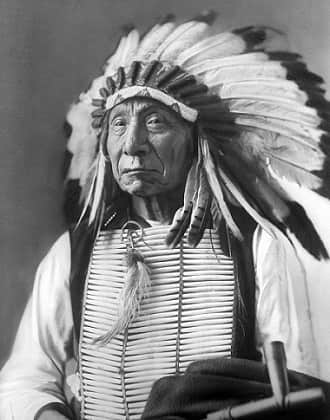


Native Americans and fights for their freedom in the West
Native Americans were the first people of the Americas. Long before 1776, they formed civilizations and cultures. Later, conflict would arise and Native Americans would continue to fight for their freedom in the Americas. The federal government from the Constitution made the federal government to regulate trade with the Native Americans. The relationship between the U.S. government and the Native Americans were strained, because of broken treaties, conflicts, and disagreements. During the 1830's, the government unjustly forced thousands of Native Americans from the East to resettle west of the Mississippi River. They promised them the land there forever, which wouldn't be the case. White settlers wanted more land. Native American culture would be changed forever. Native Americans were diverse and they are diversity of cultures and societal structures. After the Civil War, only about 250,000 Native Americans lived in the region west of the Mississippi River. Native Americans viewed themselves as part of Nature, so they wanted Nature to be treated as sacred. There were the Chinoks in the Pacific Northwest who had supplies of fish. The Pueblos irrigated the land to grow corn, beans, and squash in New Mexico plus Arizona. The Sioux, Blackfeet, Crows, Cheyenne, and the Comanches were the Plains Native Americans who were nomadic human beings. They were horsemen and hunted buffalo. The buffalo was used as food, tools, and clothing. Many white settlers viewed the land as a resource to make profits, which contradicted the Native Americans' views on land. This caused conflict.
President Andrew Jackson (who was a far right wing ideologue and a racist) forced Native Americans from lands in Georgia into Oklahoma. By the 1850's, federal policy changed. Gold and silver were founded in the Indian Territory (i.e. Oklahoma). Railroads would develop to cross the continent. The federal government restricted further about where Native Americans could live. Many Native Americans lived in reservations or places set aside by the government for Native American living. They faced poverty and suppression. This happened during the late 1860's. Native Americans were subjected to more diseases by white settlers. The Native Americans had no immunity to them. Many buffalo heads died. The growth of technology and communication in America increased American expansion, but this expansion readily ignored the Native American peoples who already lived in the lands. Many Native Americans fought back for their freedom. Native Americans in the West used their style of limited, battle oriented warfare. The U.S. Army used the telegraph and railroads to coordinate its attack strategies.
Many tribes fought the Army, some supported the Army, and others avoided warfare all together. Most of these battles took place in Arizona, Texas, and New Mexico. The Snake War from 1864 to 1868 was very bloody. Back in 1862, a group of Sioux people resisted threats to their land rights. They attacked settlements in eastern Minnesota. The government responded by waging a full war against the Sioux, who then were pushed west into the Dakotas. The Sioux rebellion caused many more attacks on settlements a stagecoach lines. Plains Native Americans viewed their lives as being threatened by Westward expansion. Both sides distrusted each other. The Colorado War fought by Cheyenne, Arapaho and Sioux, was fought in the territories of Colorado to Nebraska. The conflict was fought in 1863–1865 while the American Civil War was still ongoing. Caused by dissolution between the Natives and the white settlers in the region, the war was infamous for the atrocities done between the two parties.
White militias destroyed Native villages and killed Indian women and children such as the bloody Sand Creek Massacre, and the Indians also raided ranches, farms and killed white families such as the American Ranch Massacre and Raid on Godfrey Ranch. By the fall of 1864, a band of Colorado militia came upon a group of an unarmed camp of Cheyenne and Arapaho Native Americans. They were under U.S. Army protection at Sand Creek. The troops still opened fire. They killed many men, women, and children Native Americans even when the Native Americans signaled their friendship by raising the American flag. The commanding officer was the murderer John Chivington. This event was the Sand Creek Massacre. It caused more warfare as Plains tribes joined forces to repel white settlement. After the Civil War ended, regiments of Union troops (both white and African Americans troops) were sent to the West to subdue the Native Americans. They were recruitment posters for volunteer cavalry promised that soldiers could claim any "horses or other plunder" taken from the Native Americans. The federal government defended this reprehensible action to use imperialism to harm Native American people. Plains tribes continue to fight. Later, the federal government said that they wanted to build a road throughout Sioux hunting grounds to connect gold mining towns in Montana. Conflict grew. In 1866, Red Cloud (who was a legendary warrior) and his followers lured Captain William Fetterman and his troops into an ambush (killing them all). Reformers and humanitarians promoted education for Native Americans. Other westerners wanted strict controls over Native tribes.
In the Apache Wars, Colonel Christopher "Kit" Carson forced the Mescalero Apache onto a reservation in 1862. In 1863–1864, Carson used a scorched earth policy in the Navajo Campaign, burning Navajo fields and homes, and capturing or killing their livestock. He was aided by other Native American tribes with long-standing enmity toward the Navajos, chiefly the Utes. Another prominent conflict of this war was Geronimo's fight against settlements in Texas in the 1880's. The Apaches under his command conducted ambushes on US cavalries and forts, such as their attack on Cibecue Creek, while also raiding upon prominent farms and ranches, such as their infamous attack on the Empire Ranch that killed three cowboys. The U.S. finally induced the last hostile Apache band under Geronimo to surrender in 1886.
During the Comanche campaign, the Red River War was fought in 1874–75 in response to the Comanche's dwindling food supply of buffalo, as well as the refusal of a few bands to be inducted in reservations. Comanches started raiding small settlements in Texas, which led to the Battle of Buffalo Wallow and Second Battle of Adobe Walls fought by buffalo hunters, and the Battle of Lost Valley against the Texas Rangers. The war finally ended with a final confrontation between the Comanches and the U.S. Cavalry in Palo Duro Canyon. The last Comanche war chief, Quanah Parker, surrendered in June 1875, which would finally end the wars fought by Texans and the Native Americans.
Red Cloud's War was led by the Lakota chief Red Cloud against the military who were erecting forts along the Bozeman trail. It was the most successful campaign against the U.S. during the Native American Wars. By the Treaty of Fort Laramie (1868), the U.S. granted a large reservation to the Lakota, without military presence; it included the entire Black Hills. Captain Jack was a chief of the Native American Modoc tribe of California and Oregon, and was their leader during the Modoc War. With 53 Modoc warriors, Captain Jack held off 1,000 men of the U.S. Army for 7 months. Captain Jack killed Edward Canby
The United States Indian Peace Commission wanted to promote the racist lie that peace would only come to Native Americans if they settled on farms and adapted to the civilization of white people.
The government wanted to pacify the Sioux and get more land. So, the government signed the Fort Laramie Treaty of 1868. The government agreed to not build the road through Sioux Territory and to abandon 3 forts. The Sioux and other tribes who signed the treaty agreed to live on reservations with support from the federal government. There were problems, because many Native Americans couldn't live in the limited territories restricted to them. Many agents from the Bureau of Indian Affairs (which handled reservation issues) sold funds and resources that were meant to be given to the Native Americans. The government didn't do enough to enough various treaties. Native Americans were forces to live in impoverished areas. Disease and poverty were in those regions. Treaties and promises were broken. So, many young Native Americans warriors were frustrated and turned to rebellion against an oppressive state. There was the Red River War. This was about many battles among the government and the southern Plains Native American tribes (like the Kowas and Comanches). Southern buffalo herds declined as a product of this war. White settlers soon opened the western panhandle of Texas. The government failed to enforce the 1867 Treaty of Medicine Lodge. White buffalo hunters were not kept off of Native American hunting grounds. Food and supplies from the government were not sent to tribes. Also, white lawlessness was not prevented. Many Native Americans attacked a group of Texans near the Red River in June 1874. It ended with the last Comanche holdouts surrendering to U.S. troops by June 1875.

This image shows Crow Native Americans from 1883
Many settlers wanted gold in the northern Plains too. There was the Black Hills Gold Rush of 1875. Prospectors came onto Sioux hunting grounds in the Dakotas and in Montana too. The Sioux was led by chiefs Crazy Horse and Sitting Bull combined to form a group to try to derive the prospectors out. Later, the U.S. Army sent its own troops against Native Americans. In June 1876, colonel named George Custer rushed ahead of the other columns of the U.S. cavalry and arrived a day ahead of the main force. Custer came in the Little Bighorn River in present day Montana. Custer had a force of about 250 men unexpectedly came upon a group of at least 2,500 Native Americans. Crazy Horse led the charge at what became known as the Battle of Little Big Horn. Custer was killed including all of his men. The U.S. Army wanted revenge. The Army tracked down the Native Americans. Sitting Bull and his followers came into Canada. Crazy Horse and his followers surrendered. Many of them were starving and suffered bad weather conditions. By this time, government suppression of Native Americans continued. In Idaho, the government wanted to move against the Nez Perces. The government wanted to force Native Americans into a smaller reservation.
Many Nez Perces were Christians and settled in a stable life. Nez Perces' leader was Chief Joseph. He wanted to evade U.S. with his people to escape forced relocation. He led his people of more than 1,300 miles to Canada. He was stopped short of the border and said, "I will fight no more forever." He was sent to Oklahoma. He came into Washington, D.C. 2 times to try to allow the state to give mercy to his people. The Native American resistance movement back then started to decline after leaders were captured and killed. The Native American economy declined. The Ghost Dance revival movement came. This was a spiritual movement about a return to justice for tribes. People in the movement hoped for the buffalo to return and for white settlers to leave. The government wanted to see what this movement would go into. The government called for the arrest of Sitting Bull to stop the Ghost Dance movement. Fights broke out.
![Survivors of the Wounded Knee Massacre. [left to right] Brothers White Lance, Joseph Horn Cloud, and Dewey Beard . Joseph Horn Cloud was about sixteen years old when he witnessed the Wounded Knee massacre on December 29, 1890, two other brothers, Frank Horn Cloud and Earnest Horn Cloud also survived, his parents, two brothers, and a sister were killed.](https://s-media-cache-ak0.pinimg.com/564x/07/82/33/0782333d4b8be974d2fc9ea400de42e9.jpg)
These are some of survivors of the Wounded Knee Massacre. From left to right are: Brothers White Lance, Joseph Horn Cloud, and Dewey Beard. Joseph Horn Cloud was about sixteen years old when he witnessed the Wounded Knee massacre on December 29, 1890. The two other brothers, Frank Horn Cloud and Earnest Horn Cloud also survived, his parents, two brothers, and a sister were killed.
One person defended the Native Americans way of life like the author Helen Hunt Jackson. She was one of the few Americans back then who told the truth about the genocide that Native Americans experienced. Reservations and assimilation never worked. Assimilation is about forcing Native Americans to embrace white American culture against their will in order for them to be docile and compromise their cultural heritage. Susette La Flesche fought for Native American rights too. She was the granddaughter of a French trader and an Omaha Native American woman. In 1871, the Congress passed the law that Native Americans in American soil couldn't form a nation of their own. The 1887 Dawes General Allotment Act gave Native Americans a 160 acre farmstead. This land wasn't big enough. Many missionaries and other people tried to force assimilation onto Native Americans. To this very day, Native Americans are fighting for their human rights.


Reservations
Reservations were created by after attacks on Native American people. It was the usage of state power to forcibly send Native Americans from their own lands into often dilapidated, terrible lands. Today, the lands are under the U.S. Bureau of Indian Affairs. They are not run by the state governments of America. There are 326 Native American reservations in America. Today, there are 567 recognized tribes. They total in about 56.2 million acres or 87,800 square miles. This is about the size of Idaho. Most reservations are small and the 12 largest Native Americans ones are larger than the state of Rhode Island. The largest reservation in America is the Navajo Nation Reservation, which is similar to the size of West Virginia. Tribes have tribal sovereignty. A majority of Native Americans and Alaska Natives live somewhere other than the reservations, often in big western cities such as Phoenix and Los Angeles. In 2012, there were over 2.5 million Native Americans with about 1 million living on reservations. European colonists often removed Native Americans from their lands via violence. Treaties existed, voluntary moves existed, and genocide occurred. The Treaty of Paris (of 1783) caused the American officials to further strip Native Americans of property rights east of the Mississippi River. During the 19th century, treaties grew and they were broken as well.
The 1830 Indian Removal Act caused the U.S. federal government to forcibly remove Native populations from European populated areas. One example was when the Five Civilized Tribes were removed by force from the southern United States and moved into Oklahoma. This mass migration was called the Trail of Tears. These lands in Oklahoma turned into reservations. In 1851, the United States Congress passed the Indian Appropriations Act which authorized the creation of Native American reservations in modern-day Oklahoma. Relations between settlers and natives had grown increasingly worse as the settlers encroached on territory and natural resources in the West. By 1868, President Ulysses S. Grant wanted to use the Peace Policy. This policy wanted to stop violence. It wanted to relocate tribes from their ancestral homes into parcels of lands for their habitation. It promoted assimilation or using religious people to teach Native Americans Christianity and use Quakers in this job especially. This was very controversial. Executive orders formed reservations. Many white settlers didn’t want large amounts of land for this project.
There was corruption found in federal Native American agencies and poor conditions among the relocated tribes as documented by a report sent to Congress in 1868. Some tribes ignored the relocation orders. American Army forces fought Native Americans and caused many massacres. By 1882, religious organizations weren’t involved in the federal Indian agency.
The Dawes Act made reservations to tribes. The Indian Reorganization Act of 1934, also known as the Howard-Wheeler Act, was sometimes called the Native American New Deal. It laid out new rights for Native Americans, reversed some of the earlier privatization of their common holdings, and encouraged tribal sovereignty and land management by tribes. The act slowed the assignment of tribal lands to individual members and reduced the assignment of 'extra' holdings to nonmembers. Infrastructure and education were sent to tribes. The problem was that the new Indian Commissioners Myers and Emmons introduced the idea of the "withdrawal program" or "termination", which sought to end the government's responsibility and involvement with Indians and to force their assimilation. Many Native Americans were not compensated and some tribes lost their federal status as tribes. Disputes over land continue to this very day. Reservations came about via the acts of oppression and Native Americans have continuously fought back against injustice.
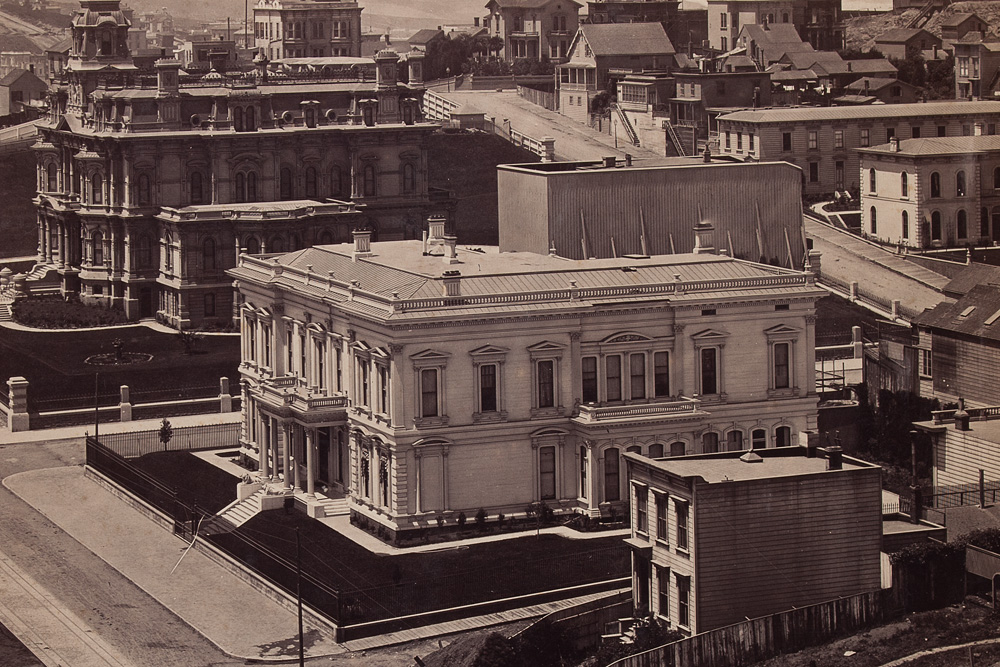
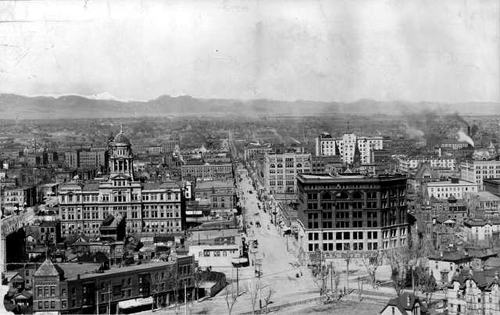
Societies
Societies in the frontier West were eclectic and diverse. Many people back then fought for democracy and equality. There has been literature talked about society like from Frederick Jackson Turner. The new states of Kentucky, Tennessee, Alabama, and Ohio were more democratic in many ways that some parent states back East in terms of politics and society. The Western states were the first to give women the right to vote. By 1900 the West, especially California and Oregon, led the Progressive movement. Scholars have examined the social history of the west in search of the American character. The history of Kansas, argued historian Carl L. Becker a century ago, reflects American ideals. He wrote: "The Kansas spirit is the American spirit double distilled. It is a new grafted product of American individualism, American idealism, and American intolerance. Kansas is America in microcosm." Societies in that region reflected frontier life. There has been individual efforts to grow societies and collective efforts as well. Many people saw unsettled lands and conflicts with Native Americans. The frontier focused on human beings having irrigation and agricultural systems. Places in the West had massive discrimination too. We are not naïve about the frontier West.
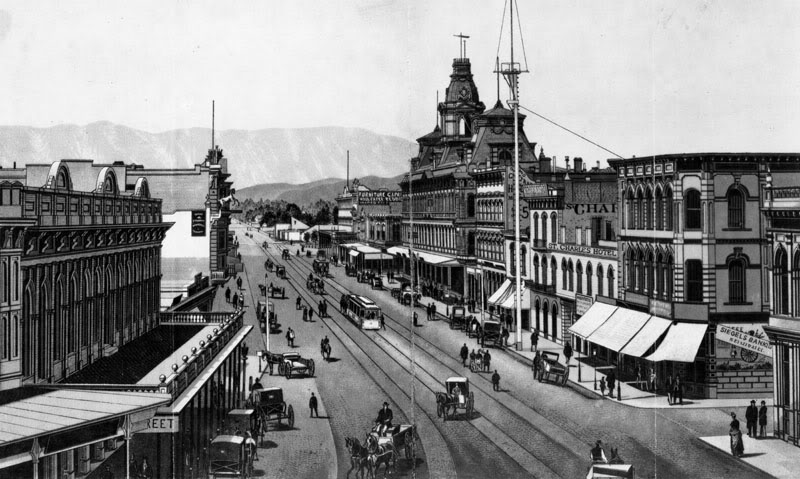
Urban Growth
Cities in the frontier West dealt with transportation, financial and communication centers, and providers of merchandise, services, and entertainment. After 1860, the railroads pushed westward into unsettled territory. Cities once were service towns to handle railroad construction crews, train crews, and passengers who ate meals at scheduled strops. In most of the South, there were very few cities of any size for miles around, and this pattern held for Texas as well. Railroads didn’t arrive fully until the 1880's. Many places shipped cattle out and cattle drives became short distance affairs. Armed gangs often targeted passenger trains. One city that grew in the West was Denver. Mining consumed Denver’s economy before 1870. It grew, because it expanded its role in railroads, wholesale trade, manufacturing, food processing, and servicing the growing agricultural and ranching hinterland. Between 1870 and 1890, manufacturing output soared from $600,000 to $40 million, and population grew by a factor of 20 times to 107,000. Denver had always attracted miners, workers, and travelers. Saloons and gambling dens sprung up overnight. The city fathers boasted of its theaters, and especially the Tabor Grand Opera House built in 1881.
By 1890, Denver had grown to be the 26th largest city in America and the fifth-largest city west of the Mississippi River. The boom times attracted millionaires and their mansions, as well as hustlers, poverty and crime. Denver gained regional notoriety with its range of bawdy houses, from the quarters of madams to the squalid "cribs" located a few blocks away. Business was good; visitors spent lavishly, then left town. As long as the madams and others did not advertise their availability too crudely, authorities took their bribes and looked the other way. Occasional cleanups and crack downs satisfied the demands for reform. Back then, Butte Montana was the largest, richest, and rowdiest mining camp on the frontier. It had a large amount of copper. It had many Irish Catholics, who were in control of politics and had the best jobs at the leading mining corporation called Anaconda Copper. City boosters opened a public library in 1894. Ring argues that the library was originally a mechanism of social control, "an antidote to the miners' proclivity for drinking,...and gambling". It was also designed to promote middle-class values and to convince Easterners that Butte was a cultivated city. The West also had a lot of ethnic diversity. People of many nationalities and colors traveled into the West.

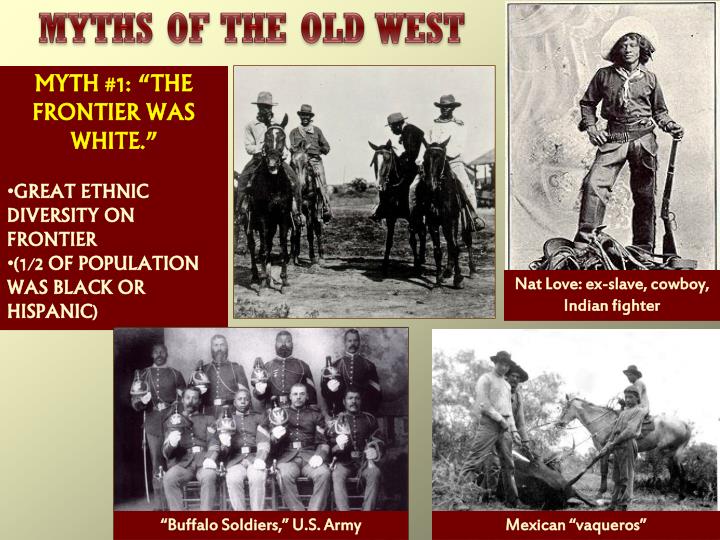
The Ethnic Diversity of the West
The frontier West always had great ethnic diversity during the 19th century. African Americans have a long history in the West. Many black people went into the West as workers, preachers, cooks, farm hands, and saloon workers. Some were cowboys, and outlaws. James Beckwourth during the 1800’s was the famous African American fur trapper and trader. He came into the Rock Mountains and was a member of the William Henry Ashley Fur Trapping Expedition. He operated throughout the West from Montana south to New Mexico. He worked in California too. Pio Pico from 1831 was a descendant of person of African ancestry. He becomes governor of Mexico California after overthrowing Colonel Manuel Victoria, who was another person of African ancestry. In the summer of 1844, George Bush, a free African American, travels with a party of Missouri emigrants on the Oregon Trail. When Bush reaches Oregon City in November, he decides to move to the sparsely populated area north of the Columbia to avoid the exclusion law. His decision encourages other settlers to follow. Eventually they petition Congress to create Washington Territory. In 1849, early African American settlers in San Francisco create the first two mutual aid associations for blacks in the far west, the West Indian Benevolent Association and the Mutual Benefit and Relief Society.
St. Andrews African Methodist Episcopal Church of Sacramento is the first black church west of Texas, which was established in 1851. In 1852, San Francisco had 464 African Americans. That was the largest urban black population of the Far West. Sacramento had 338 black residents, which had the second largest black community. Black owned businesses back then in San Francisco include the New England Soap Factory established by James P. Dyer and Pioneer Boot and Shoe Emporium owned by Mifflin Gibbs and Peter Lester. In January of 1856, Los Angeles District Court Judge Benjamin Hayes frees Bridget Biddy Mason and her thirteen extended family members. By 1862, San Francisco black Americans organize the Franchise League to campaign for voting rights and to end courtroom testimony restrictions. On April 17, 1863, Charlotte Brown files the first of several lawsuits that challenge black exclusion from San Francisco streetcars. By the late 1860's the streetcar companies end their discriminatory policies. On July 17, 1863, the First Kansas Colored Infantry, fighting with the Cherokee Native American and white Colorado Union regiments, defeat Confederate forces at the Battle of Honey Springs in Oklahoma, the largest military engagement in the Indian Territory during the Civil War. The Buffalo Soldiers were famous from the all black 9th and 10th Cavalry regiments and the 24th and 25th Infantry Regiments of the U.S. Army. Many of them served in many western forts. About 4,000 black people came into California during the Gold Rush. By 1879, after the end of Reconstruction in the South, several thousand Freedmen moved from Southern states to Kansas. Known as the Exodusters, they were lured by the prospect of good, cheap Homestead Law land and better treatment. The all-black town of Nicodemus, Kansas, which was founded in 1877, was an organized settlement that predates the Exodusters but is often associated with them.
Asian Americans worked as builders of the railroads and worked in mines throughout the frontier West. They had a major role in the workforce of building the Central Pacific portion of the transcontinental railroad. Most of the Chinese Americans went back into China after the railroad was finished by 1870. Many were peasants. Others worked in mining, agriculture, and opened small shops such as groceries, laundries and restaurants. Hostility remained high as seen by the Chinese Massacre Cove episode and the Rock Springs massacre. The Chinese were generally forced into self-sufficient "Chinatowns" in cities such as San Francisco. In Los Angeles, the last major anti-Chinese riot took place in 1871, after which local law enforcement grew stronger. In the late 19th century, many (not all) Chinatowns were squalid slums known for their vice, prostitution, drugs, and violent battles between "tongs." By the 1930's, however, tons of Chinatowns had become clean, safe and attractive tourist destinations. In the 1890–1907 era, thousands of Japanese permanently migrated to Hawaii and California as farm workers. Immigrants born in Asia were generally ineligible for US citizenship until World War II. However their children born in the U.S. automatically became citizens, because of the 14th Amendment rightfully made legal birthright citizenship.




Hispanic Americans were in the West for centuries before the 1800’s. The great majority of Hispanic people lived in the forming territories of New Spain. Many of them became American citizens in 1848. About 10,000 or more lived in California. They were called Californios in southern California. After 1880, more people came into California from the east in the thousands. Those in New Mexico lived in towns and villages. This didn’t change into the early 20th century. More Mexicans came into New Mexico because of the Revolution of 1911. The Revolution caused devastation to thousands of villages across Mexico. Most refugees went to Texas or California, and soon poor barrios appeared in many border towns. The California "Robin Hood", Joaquin Murieta, led a gang in the 1850's which burned houses, killed miners, and robbed stagecoaches. In Texas, Juan Cortina led a 20-year campaign against Anglos and the Texas Rangers, starting around 1859. The Hispanic community grew larger and became involved in agricultural, farming, civil rights activism, and a diversity of constructive actions in the frontier West.
European immigrants often built communities of similar religious and ethnic backgrounds. For example, many Finns went to Minnesota and Michigan, Swedes and Norwegians to Minnesota and the Dakotas, Irish to railroad centers along the transcontinental lines, Volga Germans to North Dakota, and German Jewish people to Portland, Oregon.
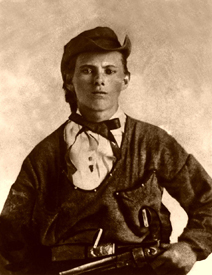
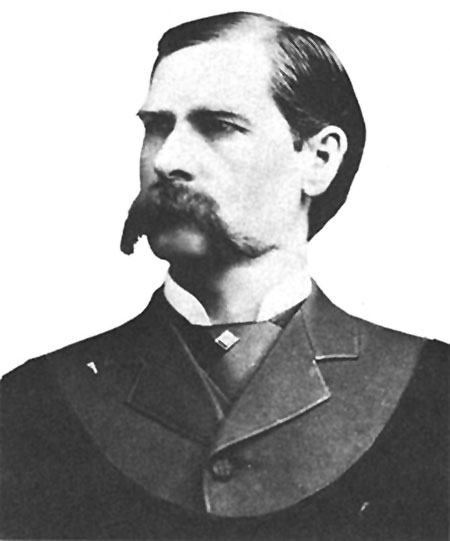


Various Characters of the West
From 1865 to 1900, tons of people lived in the West. Some were heroes and some were villains. The following are stories of many of the characters of the West whose stories have been shown in books, magazines, movies, and other literature. “Wild Bill” Hickok killed the gambler Davis Tutt in a shootout in Springfield, Missouri in July 21, 1865. This confrontation is shown in Harper’s Magazine. Hickok is a household name. This represents a popular image of the Old West. Hickok’s real name is James Butler Hickok. He was a drover, a soldier, a spy, a gunfighter, a showman, and an actor. Sometimes, he exaggerated his exploits. He was born and raised on a farm in northern Illinois. He also fought and spied for the Union Army during the American Civil War. In 1876, Hickok was shot from behind and killed while playing poker in a saloon in Deadwood, Dakota Territory (present-day South Dakota), by Jack McCall, an unsuccessful gambler. The hand of cards which he supposedly held at the time of his death (including the ace of spades, the ace of clubs, the eight of spades and the eight of clubs) has become known as the dead man's hand. The outlaws Frank and Jesse James robbed their first bank in Liberty, Missouri. Jesse James and his brother worked as Confederate guerillas or bushwhackers during the Civil War. They were accused of executing atrocities against Union soldiers like the Centralia Massacre. They were from Missouri. They worked with a gang of outlaws to rob banks, stagecoaches, and trains. The James brothers were most active as members of their own gang from about 1866 until 1876, when as a result of their attempted robbery of a bank in Northfield, Minnesota. Several members of the gang were captured or killed.
They continued in crime for several years, recruiting new members, but were under increasing pressure from law enforcement. On April 3, 1882, James was killed by Robert Ford, a young member of his gang who hoped to collect a reward on James' head. In 1867, Lucien B. Smith of Kent, Ohio issued the first patent for barbed wire fencing. This invention revolutionized cattle ranching on the open prairies of the West. In 1870, William "Hurricane Bill" Martin, a notorious Kansas outlaw, begins rustling cattle southeast of Abilene before he and his gang are driven off by a posse from Marion. The Utah Territorial Assembly (in 1870), supported by Brigham Young, granted women the right to vote. Over the next several decades, this provides Mormons with an added margin of political power. Calamity Jane was a woman, who was an American frontierswoman. She was a professional scout and was born in Missouri. She died in 1903 in Terry, South Dakota. John Younger, a member of the Younger Gang, is killed by Pinkerton detectives Louis Lull and Jim Duckworth in St. Clair County, Missouri (in March of 1878).
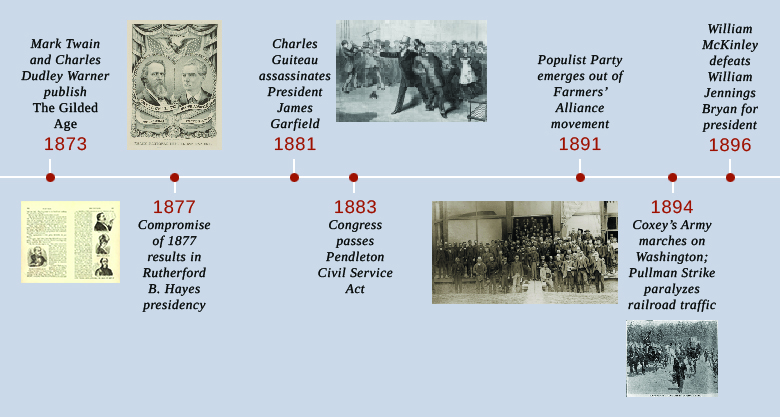

In the same year, Ike and Billy Clanton enlist William "Curly Bill" Brocius and Johnny Ringo as they begin cattle rustling in the New Mexico and southern Arizona Territories. Other famous people of the West were Billy the Kid, “Doc” Holiday, “Belle” Starr, and Geronimo. Wyatt Berry Stapp Earp (March 19, 1848 – January 13, 1929) was an American Old West gambler, a deputy sheriff in Pima County, and deputy town marshal in Tombstone, Arizona Territory, who took part in the gunfight at the O.K. Corral, during which lawmen killed three outlaw cowboys. He is often regarded as the central figure in the shootout in Tombstone, although his brother Virgil was Tombstone city marshal and Deputy U.S. Marshal that day, and had far more experience as a sheriff, constable, marshal, and soldier in combat. Wyatt Earp lived restless and had a large list of jobs from hunter, bouncer, saloonkeeper, and boxing referee. He was born in Illinois and died in Los Angeles, California in 1929. Jim Baker (1818–1898), trapper, scout and guide, was a friend of Jim Bridger and Kit Carson and one of General John C. Fremont's favorite scouts. He was one of the most colorful figures of the old west. Mary Fields was the first African-American woman star route mail carrier in the United States. George McJunkin was an African American cowboy, amateur archaeologist and historian in New Mexico. He discovered the Folsom Site in 1908. Born to slaves in Midway, Texas, McJunkin was approximately 14 years old when the Civil War ended. He worked as a cowboy for freighters. He reportedly learned how to read from fellow cow punchers.
McJunkin taught himself to read, write, speak Spanish, play the fiddle and guitar, eventually becoming an amateur archaeologist and historian. Bill Pickett was a great African American cowboy, rodeo, and Wild West show performer. He was born in Texas in 1870. His father was a former slave. He had nine children with Maggie Turner. He invented the technique of bulldogging, the skill of grabbing cattle by the horns and wrestling them to the ground. It was known among cattlemen that, with the help of a trained bulldog, a stray steer could be caught. Bill Pickett had seen this happen on many occasions. He also thought that if a bulldog could do this feat, so could he. Pickett practiced his stunt by riding hard, springing from his horse, and wrestling the steer to the ground. Pickett's method for bulldogging was biting a cow on the lip and then falling backwards. He also helped cowboys with bulldogging. This method eventually lost popularity as the sport morphed into the steer wrestling that is practiced in rodeos. Bill Pickett was very popular and he passed away in Oklahoma.
Sarah Gammon Brown Bickford, who was an African American woman, (c. 1852 – 1931) was born into slavery in either Tennessee or North Carolina. In the 1870’s, she made her way to the Montana goldfields, trading work as a nanny for transportation. She ultimately became sole owner of the Virginia City Water Company, becoming the first and only woman in Montana—and probably the nation’s only female African American—to own a utility. She had children. She organized a restaurant, bakery, and boarding house in Virginia City. She always worked hard as a manager and people in her community respected her. In 2012, the State of Montana honored her by inducting her into the Gallery of Outstanding Montanan.
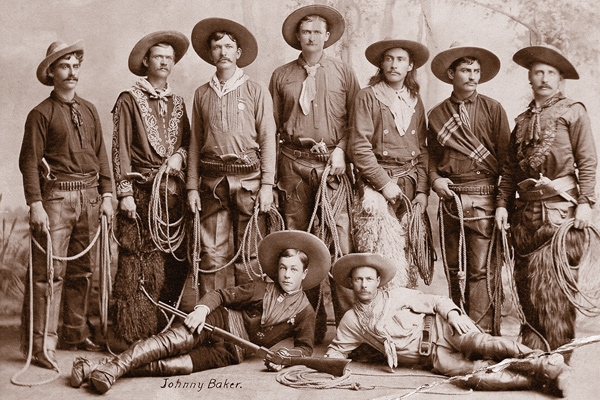


Cowboys and Cowgirls
The cowboys of the frontier West have been subject to a lot of myths. Now, in our generation, people know more of the truth. Many cowboys were law abiding people. Many were criminals. Many were bandits and many were caring for their families. Cowboys were diverse. The life of the American cowboy was very hard. Many rounded up cattle during the spring and fall. They drove animals into the market. Some of them used money to spend on food, clothing, gambling, and prostitution. They worked on equipment and buildings during the winter near the cattle towns. On many occasions, one cowboy would handle 250 head of cattle. Some cowboys were hired to do herding, ranching, and protecting cattle. Many cowboys carried weapons like the Bowie knife, lasso, bullwhip, pistols, rifles, and shotguns. They faced many Native Americans and rustlers. Some of them were veterans of the Civil War (from both the Union and the Confederacy).
They were very diverse. They included African Americans, Latino-Americans, Native Americans, European Americans, immigrants, and those from other parts of America. The earliest cowboys as we see them today came from Texas. They traded and used unique clothing. Some of them adopted jargon from the Mexican vaqueros. These were heirs of the Spanish cattlemen from middle-south Spain. African Americans from the Buffalo Soldiers were involved in cowboy like activities from capturing livestock thieves, protecting settlers heading west, building infrastructure, etc. Bass Reeves was a black deputy U.S. Marshall. He arrested more than 3,000 felons and shot and killed 14 outlaws in self-defense. Bass Reeves was born in Crawford County, Arkansas and loved the frontier life in Oklahoma. Ned Huddleston (also known as Isom Dart) was one of the famous black cowboys. He traveled to work on ranches and did other actions too. He lived in Wyoming.
Cowboys wore clothing to protect themselves. All the distinct clothing of the cowboy—boots, saddles, hats, pants, chaps, slickers, bandannas, gloves, and collar-less shirts—were practical and adaptable, designed for protection and comfort. The cowboy hat quickly developed the capability, even in the early years, to identify its wearer as someone associated with the West; it came to symbolize the frontier. The most enduring fashion adapted from the cowboy, popular nearly worldwide today, are "blue jeans", originally made by Levi Strauss for miners in 1850. Handling cattle was a long process. Most male cattle were castrated. They were dehorned and examined plus treated for infections. On average, cowboys earned $30 to $40 per month, because of the heavy physical and emotional toll; it was unusual for a cowboy to spend more than seven years on the range. As open range ranching and the long drives gave way to fenced in ranches in the 1880's, by the 1890's the glory days of the cowboy came to an end, and the myths about the "free living" cowboy began to emerge.
Cattle trading grew the cowtowns (which promoted the cattle industry). Cattle towns include places like Abilene, Dodge City, and Ellsworth. They lasted for a few years in many cases. Some cowboys worked in rodeos to celebrate their talents. Cowgirls existed too and they have made many achievements involving the frontier West. Cowboys existed globally in South America and Australia as cattle herders. Cowboys in Hawaii were called the panjolo. They learned skills from the Mexican vaqueros. Cowboy celebrations and rodeos continue to exist in the 21st century nationwide. In our time black women have participated in athletic completion in the Bill Picket Rodeo, which is the nation’s only touring black rodeo competition. Some modern day black women in the competition include four Washington, D.C. based women. Their names are Kisha Bowles, Selina Brown, Sandra Dorsey, and Brittaney Logan.

The environment
Caring for the environment is always important. To care for the environment is to care for yourself. The modern environmental movement in America existed during the 19th century. Many lumber and coal companies wanted the maximum usage of trees, coals, and other resources for jobs, economic growth, and profit. They wanted natural resources. There were many conservationists back then too. Many of them were moderates on environmental issues like Theodore Roosevelt. They were diverse. Some were outdoorsmen, sportsmen, bird watchers, and scientists. They united to fight to reduce waste. They wanted the natural beauty to be preserved. They embraced tourism. They wanted ample wildlife for hunting. So, they desired the careful management of the lands. In that sense, they would in their minds cause long term economic benefit along with environmental protections. Theodore Roosevelt worked in his life to conserve natural resources. He worked closely with Gifford Pinchot and used the Newlands Reclamation Act of 1902 to promote federal construction of dams to irrigate small farms and placed 230 million acres (360,000 mi² or 930,000 km²) under federal protection. Roosevelt set aside more Federal land, national parks, and nature preserves than all of his predecessors combined. Roosevelt explained his position in 1910: "Conservation means development as much as it does protection. I recognize the right and duty of this generation to develop and use the natural resources of our land but I do not recognize the right to waste them, or to rob, by wasteful use, the generations that come after us."
There were many environmentalists who honored nature for its own sake. They rejected the maximizing of the human benefits as a goal. These were progressive environmentalists. One leader of this movement was John Muir. He lived from 1838 to 1914. Muir promoted preservation of wilderness. He was an author and naturalist. He founded the Sierra Club, which is based in California. To this day, the Sierra Club has promoted environmental causes. In 1889, he started to organize support for the preservation of the sequoias (or trees) in Yosemite Valley. Congress passed the Yosemite National Park bill in 1890. In 1897 President Grover Cleveland created thirteen protected forests but lumber interests had Congress cancel the move. Muir, taking the persona of an Old Testament prophet, crusaded against the lumberman, portraying it as a contest "between landscape righteousness and the devil." A master publicist, Muir's magazine articles, in Harper's Weekly (June 5, 1897) and the Atlantic Monthly turned the tide of public sentiment. He mobilized public opinion to support Roosevelt's program of setting aside national monuments, national forest reserves, and national parks. However Muir broke with Roosevelt and especially President William Howard Taft on the Hetch Hetchy dam, which was built in the Yosemite National Park to supply water to San Francisco.
Biographer Donald Worster says, "Saving the American soul from a total surrender to materialism was the cause for which he fought." The buffalo dealt with the environment too. The rise of the cattle industry and the cowboy influence the decline of bison. The bison is called buffalo too. Once, bison was about 25 million on the Great Plains. They ate grass. Native Americans in the Plains region used the buffalo as a resource for survival literally. They used their bodies for food, hides for clothing and shelter, and bones for implements. The buffalo loss habitat, diseases, and over hunting reduced the hurts through the 19th century. They almost became extinct. The last 10–15 million died out in a decade 1872–1883; only 100 survived. Many Native Americans went into reservations by the government in order to survive the slaughter of the buffalo. The government forced the Native Americans to accept the offer of reservations on the condition that they didn’t militarily resist them. Conservationists founded the American Bison Society in 1905; it lobbied Congress to establish public bison herds. Several national parks in the U.S. and Canada were created, in part to provide a sanctuary for bison and other large wildlife, with no hunting allowed. The bison population reached 500,000 by 2003. The same environmental issues debated back then are with us today.
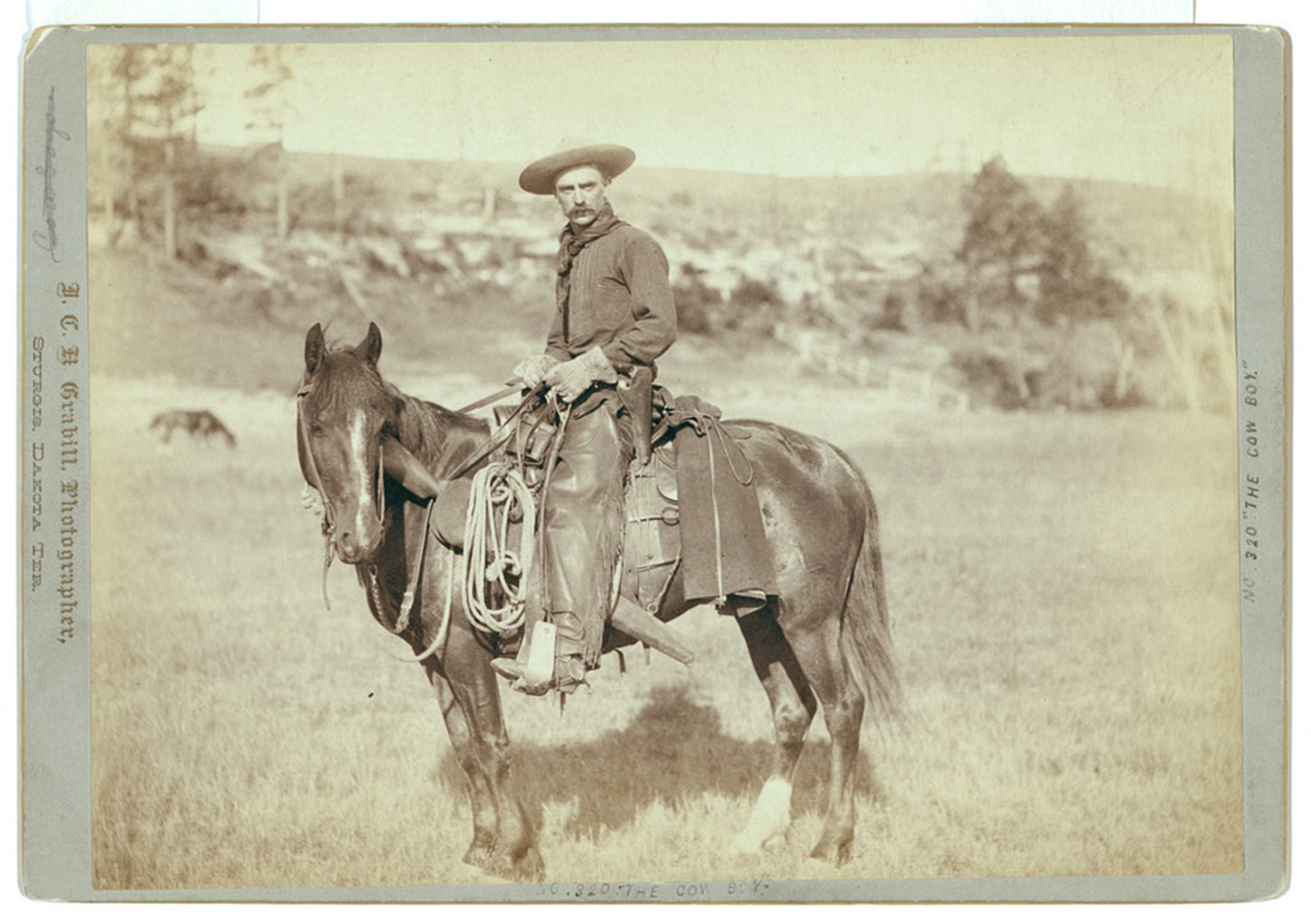
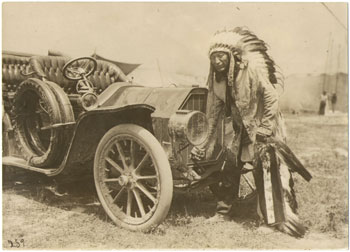
The end of the Frontier West
With wars and expansion, the frontier West ended by the late 19th and early 20th century. The frontier West evolved from lands where the populations were mostly Native American to lands filled with diverse ethnic groups. It experienced many wars from the Revolutionary War to the Civil War. After the Civil War, Native Americans fought in battles and wars to defend their way of life. The Sand Creek Massacre of 1864, the Fetterman Massacre of 1866, the Battle of Little Bighorn of 1876, the Nez Perce War of 1877, and the Battle of Wounded Knew of 1890 define the controversial and bloody nature of conflicts. Many Native Americans were forced to live in reservations, which had dilapidated land and harsh conditions. Many Native Americans suffered diseases, alcoholism, economic exploitation, racism, discrimination, and other oppressive conditions in those reservations. The federal government not only committed violations of treaties, but was active in genocide against the indigenous peoples of the Americas. This history must be shown. Ironically, the technological development of America (from railroads, telegraphs, mining, etc.) contributed to the further exploitation of the Native American people. The environmental movement grew during this time and the bison became nearly extinct because of over hunting and other factors. The frontier West experienced the growth of towns and cities from Los Angeles to Las Vegas which has changed American culture forever. The 1890 national census said that no longer a square mile of the United States not have least a few white residents. The Manifest Destiny of tyranny and theft expanded beyond the continental United States. It expanded into Guam, the Philippines, Cuba, and other locations globally. The next chapter of this series would be the final chapter of the frontier West. It will describe information about the legacy of the West, movies dealing with the frontier West, and the Native American movement for human liberation (of the 20th century and the 21st century).
Now, you know the truth. The duty of us is to educate, inspire, and help our neighbors.
By Timothy
No comments:
Post a Comment